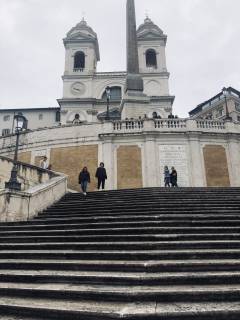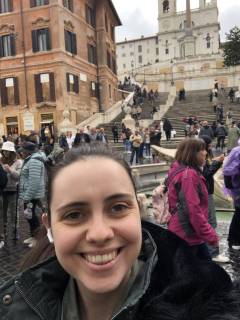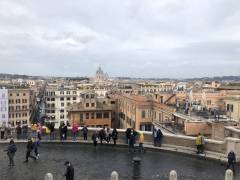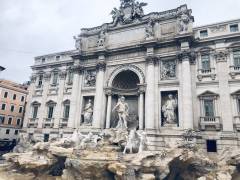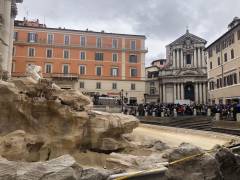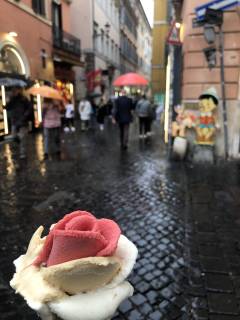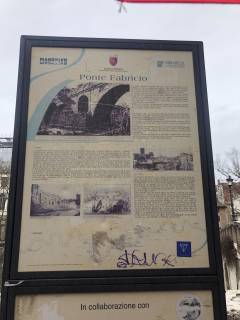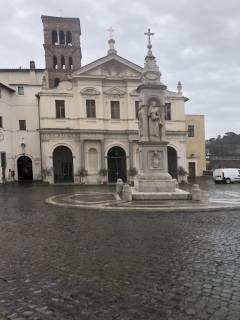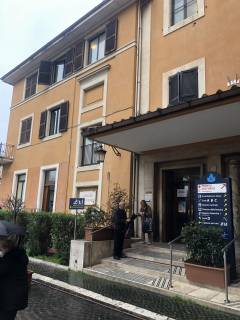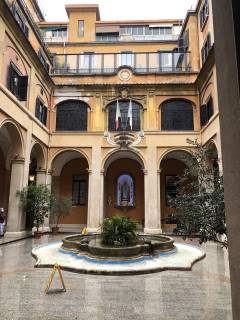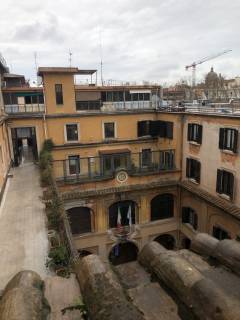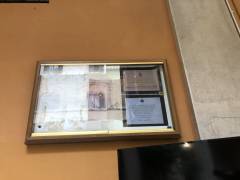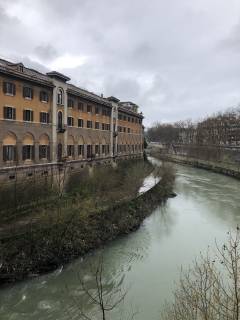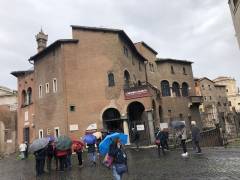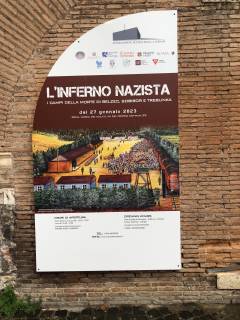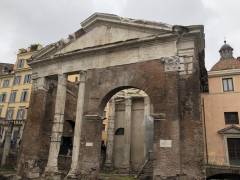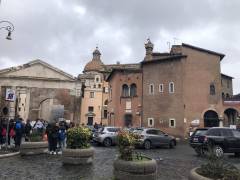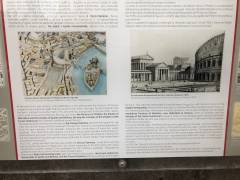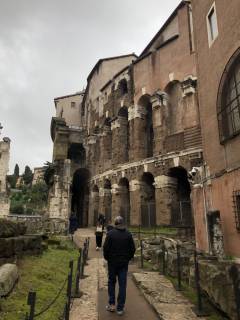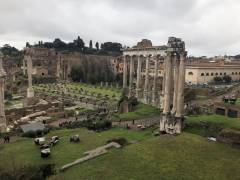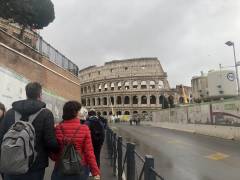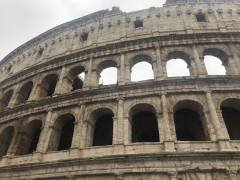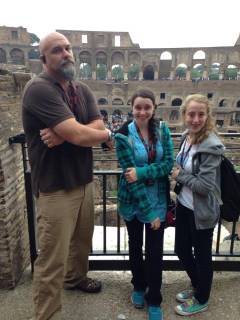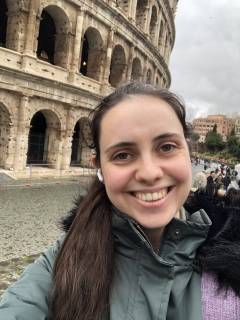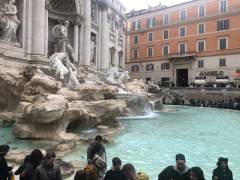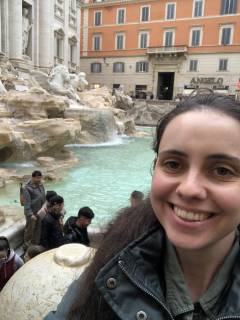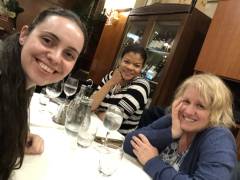
“You will get to experience the delights of the La Città Eterna!!… Rome, the Eternal City. Did no one read the info packets?” ~ The Lizzie McGuire Movie
In-between my Letters to Juliet tour during my trip to Italy in March 2023, I decided to spend the day in Rome to see if it was really “What Dreams Are Made Of.” 😉
Boarding the fast train from Florence, I prayed the rain would stay away as I arrived at Rome Termini, excited for what the day would bring.
In the early 2000s, The Lizzie McGuire Movie was a STAPLE in my life, so while it wasn’t the focus of my day, I couldn’t resist visiting a few of the film’s locations.
“Promise me that while we’re here, we’ll find adventure.” ~ The Lizzie McGuire Movie
The Trevi Fountain / Spanish Steps
After buying tickets for public transportation at a news kiosk, I hopped onto the metro to head to my first destination, the Trevi Fountain. To my astonishment, the fountain stood EMPTY as I approached. Unsure if it was under maintenance, I found myself drawn back to the Trevi Fountain throughout the day and witnessed its magical metamorphosis from dull to spectacular! With cascading blue waters brimming the pool to the illuminating statues, the fountain’s mesmerizing display of beauty and grandeur made it one of my favorite places to admire. Although tempted, I heeded Miss Ungermeyer’s advice and didn’t toss a coin into the fountain, choosing to embrace my contentment like Gordo.
Since I had already toured the Colosseum with my family when I was sixteen — and met a Sergei look-alike who had been President Clinton’s bodyguard (picture below) — I set my sights on the Spanish Steps, Europe’s largest and broadest staircase. Though the steps appear in The Lizzie McGuire Movie, my reason for visiting them stemmed from reading Kristy Cambron’s incredible novel, The Italian Ballerina. Following the characters’ journey through war-torn and modern-day Rome, I admired the view from the top of the stairs before heading to Tiber Island, my true objective of the day.
Tiber Island
Located in the south bend of the Tiber River, Tiber Island is about 270 meters long and 67 meters wide, predominately occupied by the Fatebenefratelli Isola Tiberina Hospital and the Basilica di San Bartolomeo all’Isola (Basilica of St.Bartholomew on the Island). Today, the hospital remains busy, with patients bustling in and out of the 16th-century building. While most people want to avoid hospitals during their international travels, I was intrigued by its historical significance after reading The Italian Ballerina and looked forward to learning more.
On October 16, 1943, the Nazis raided Rome’s Jewish Ghetto, forcibly deporting over a thousand Jews to Auschwitz via Rome’s Tiburtina train station (which I passed through on my journey into the city). However, thanks to the quick thinking of Dr.Giovanni Borromeo, Dr.Adriano Ossicini, Vittorio Emmanuele Sacerdoti, and Father Maurizio Bialek, dozens of lives were spared through their inventive creation of Syndrome K, a fictitious disease created to scare the Nazis.
“Il Morbo di K—Syndrome K—is a farce. An invention of this hospital. And the quarantine, a ruse to support it… There is no sickness here beyond the plague of being born a Jew.”~ The Italian Ballerina, Kristy Cambron
Leveraging the Nazis’ fear of infectious diseases, these brave men hid Jews within two wards of Fatebenefratelli Isola Tiberina for nearly a year, protecting them from the deadly fate that awaited those torn from their homes in the ghetto. In her author’s note, Kristy Cambron wrote, “Between October 1943 and the Allied Liberation of Rome in June 1944, the collective efforts of the doctors, hospital staff, and church friars ensured Jewish refugees had falsified documentation as they were filtered through the hospital, with estimates that dozens—if not hundreds —were saved.”
With this knowledge, I crossed the Ponte Fabricio and stepped onto Tiber Island, hoping to find something to bring this historical event to life. At the hospital’s information desk, I inquired about its connection to World War II, but the man spoke little English and swiftly pointed me towards the emergency room, undoubtedly presuming I’d bumped my head and was speaking gibberish. Seizing this as my invitation to enter the hospital, I conducted a private tour, venturing into multiple wards to uncover anything relating to 1943. Unfortunately, my quest led me to several dead ends (literally) as I failed to find remnants of the doctors’ courage or Syndrome K. Apart from a weathered display of certificates acknowledging the hospital’s care for victims of the Great Synagogue of Rome Attack on October 9, 1983, there was no visible evidence of where the Syndrome K “patients” were hidden. Nevertheless, as I perused the hallways and courtyards of this stunning hospital, I felt an overwhelming presence envelop me, assuring me that I was in the right place.
The Jewish Ghetto
Until WWII, the Roman Ghetto was the last remaining ghetto in Western Europe. Built in 1555, after Pope Paul IV’s papal bull that subjected Rome’s Jewish population to discrimination, the ghetto was enclosed by four gates and imposed many hardships and regulations on its residents. Due to its proximity to the Tiber River, the ghetto frequently flooded, leading to endemics of cholera and malaria.
Today, the only proof of the ghetto is a section of wall preserved inside the Great Synagogue of Rome. While I didn’t have time to visit the synagogue or Jewish Museum before they closed, I did walk the streets and imagine what it might’ve been like back then. We read about the Jewish people’s oppression under Roman rule in the Bible, but it’s still shocking to recognize how history repeats itself through the ages.
Adjacent to the Portico d’Ottavia, an ancient structure rebuilt by Augustus and dedicated to his sister, I visited a free Holocaust museum, “L’Inferno Nazista” (Nazi Hell), which was designed to educate visitors about three infamous concentration camps: Belzec, Sobibor, and Treblinka. It was a fascinating place to browse, especially when I realized I was standing on the same ground the Nazis parked their cars to round up the Jews in 1943! Nevertheless, it was sad to see that the history of Syndrome K and the Jewish Ghetto has seemingly vanished from the area. While it’s good to move on and prosper, I believe we must never forget the tragedies that brought us to where we are today!
Dinner with Friends
Despite the rain and cloudy skies, I enjoyed roaming Rome’s streets and attempting to bring history to life. While I might not have found what I’d hoped for, spending the day in this vibrant city, passing by iconic landmarks like the Colosseum and Roman Forum, was still inspiring.
Before returning to Florence, I had dinner with my friends Nicole and Sharyn, whom I met during the Serious Writers Retreat. It was great to reunite with them and talk about our adventures one last time.
With one more destination to check off my Letters to Juliet tour, I returned to my Airbnb for an early night before waking up to catch the train to SIENA!!
































